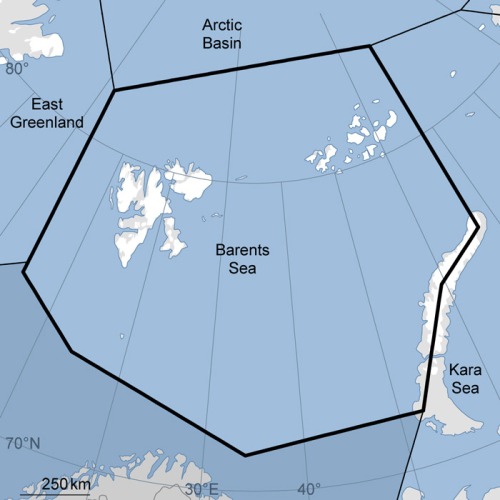AL Gore, what you got to say? More scientific evidence that polar bears are doing just fine – a 30% increase in population with some of them “as fat as pigs.”
Survey Results: Svalbard polar bear numbers increased 30% over last 11 years
Results of this fall’s Barents Sea population survey have been released by the Norwegian Polar Institute and they are phenomenal: despite several years with poor ice conditions, there are more bears now (~975) than there were in 2004 (~685) around Svalbard (a 30% increase) and the bears were in good condition.
Oddly, in a September report right after the count, biologist Jon Aars reported them in “excellent” condition, with some of them “as fat as pigs.” I guess “good” is the same as “excellent.”
Bears in the Russian portion of the Barents Sea were not counted this year because the Russians would not allow it; the previous total count, from 2004, was 2,650 (range ~1900-3600) for the entire region.

In the map above (courtesy the IUCN Polar Bear Specialist Group), the Svalbard archipelago is on the left (Norwegian territory) and the archipelagos of Franz Josef Land and Novaya Zemlya on the right (Russian territory).
Oddly, the comments made by lead researcher Jon Aars to a Norwegian newspaper (in English), which picked this up yesterday (“Polar bears make a comeback” ), were far more positive than those in the press release (which is likely all that western media will see).
Here is what Aars stated in the press release (pdf here):
“A rise in the population does not come as a big surprise, as population numbers previously have been low due to the fact that these bears were hunted until 40 years ago, Dr. Aars added.”
[Except that polar bear specialists have been saying the population has almost certainly declined because of sea ice conditions, yet despite the poor conditions in recent years, the bears are doing better than ever]
But here is what local reporters (NTB: News in English from Norway, published 23 December 2015), who were able to contact him for an interview, had to say:
“Researchers from Norsk Polarinstitutt in Tromsø have conducted their first census of sorts since 2004 regarding the polar bear population on Svalbard and in the Norwegian portions of the Barents Sea. “The population has increased,” project leader Jon Aars of the polar institute told NTB. “The Norwegian polar bear population is now calculated to include around 975 bears, compared to 685 11 years ago.”
Aars stressed that there’s a degree of uncertainty in the numbers, but he thinks the researchers have the necessary basis to claim that there’s been an increase in the total.
He also said the polar bears spotted and counted were in “good shape.” He said the ice “came early in the fall of 2014 and lasted a long time.” That means a lot for the bears, he noted.
Ice conditions in the Barents have been poor in most years since 2000, and researchers have been extremely worried about the state of the polar bear population. “It’s positive to see that the polar bears have managed well, under conditions that have been worse for several years,” Aars told NTB.” [my bold]
So again, despite the recent declines in summer sea ice that polar bear specialists, in their expert opinions, insist spell doom for polar bears, the bears are doing just fine. Make up your own mind what that means.
The evidence is now very strong that recent declines in summer/fall sea ice have little to no negative impact on polar bear populations: the real threat to polar bears is thick spring ice(Crockford 2015).
References
Crockford, S.J. 2015. “The Arctic Fallacy: sea ice stability and the polar bear.” GWPF Briefing 16. The Global Warming Policy Foundation, London. Pdf here.
Crockford, S.J. 2015. “The Arctic Fallacy: sea ice stability and the polar bear.” GWPF Briefing 16. The Global Warming Policy Foundation, London. Pdf here.
http://wattsupwiththat.com/2015/12/23/more-scientific-evidence-that-polar-bears-are-doing-just-fine-a-30-increase-in-population-with-some-of-them-as-fat-as-pigs/

Comments
Post a Comment